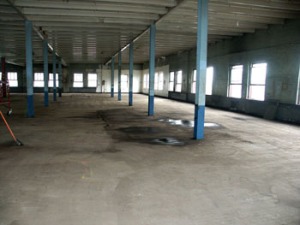 So you think you need to go to rehab? Sounds like a great song line, doesn’t it. To me, it is just more noise. Speaking of which, many apartments are changing hands today with the mortgage crisis striking, and the question of rehab is rising to the forefront. Does a rehabilitation project need to achieve noise standards? If so, anything built prior to 2000 would have problems without today’s noise ingredients; resilient channels, insulation and QUIET QURL.
So you think you need to go to rehab? Sounds like a great song line, doesn’t it. To me, it is just more noise. Speaking of which, many apartments are changing hands today with the mortgage crisis striking, and the question of rehab is rising to the forefront. Does a rehabilitation project need to achieve noise standards? If so, anything built prior to 2000 would have problems without today’s noise ingredients; resilient channels, insulation and QUIET QURL.
In the past few weeks, I’ve spoken with a number of contractors that are rehabilitating older apartments with new gypsum concrete. According to Robert Owens of Owens Floor Systems in Atlanta, the rehab market is building up momentum. “Gypsum strengths weren’t that great 10 or 15 years ago, and most of them are cracked up. When owners remove the carpet, they find a bit of a mess,” said Robert Owens.
Bill Brown with Gypsum Floors of Denver found that apartment managers are intrigued by the opportunity for better noise control in construction, since noise is the problem that is complained about most.
Are you purchasing or managing a project with low-strength underlayment from 10 years ago? Thinking of rehabilitating the floors? There is a solution in the top side and in the bottom side. Here is how to solve the problem:
Flooring
Today’s floors have significantly higher compressive strength. Strengths in the 90s were below 1000 psi in most cases, and gypsum was a secondary material to lightweight concrete, which held a large market share. Those floors are very deteriorated today, and compressive strengths have risen to compensate for this poor durability. When removing the old gypsum, a little more space is required. But with an extra 0.125”, code-compliant flooring systems can be installed (see ceiling information for all components). KEENE developed QUIET QURL 52/013 RF with a reinforced fiberglass fabric on the top and an entangled net core. The first line of defense in impact noise control is limited contact, and this new product limits touching to 5% contact area.
With old lightweight concrete, the thickness was dramatically greater and 1.5” thicknesses were the norm. By removing that and changing the product to gypsum concrete, thicker sound products can be utilized. QUIET QURL 60/040 and a 1.1” underlayment would put code compliance within reach again (QUIET QURL 55/025 with 1.25” gypsum would work also).
The last option would be to solve things topically with a recycled rubber mat. QQ Step Soft 08/035 has been proven to achieve code compliance with just about any hard surface in the “typical system.” Of course, a topical mat of that thickness isn’t always the most cost-effective solution.
 There is one more factor in floor rehab. Removing the old gypsum typically reveals 2” of plywood that isn’t T and G. This means stripping the floor to prevent gypsum concrete leaks prior to replacing the underlayment. Swapping that cost for the addition of a sound mat might be a great alternative. I always like proposing solutions that eliminate a step, and stripping subfloor seams is a time-consuming, costly step in the rehab process.
There is one more factor in floor rehab. Removing the old gypsum typically reveals 2” of plywood that isn’t T and G. This means stripping the floor to prevent gypsum concrete leaks prior to replacing the underlayment. Swapping that cost for the addition of a sound mat might be a great alternative. I always like proposing solutions that eliminate a step, and stripping subfloor seams is a time-consuming, costly step in the rehab process.
Ceiling
Without resilient channels (RC), wood frame systems have trouble with code compliance in airborne and impact noise. If the rehab has no RC, slapping them on the bottom of the gypsum ceiling IS NOT the solution. The small airspace actually creates a very audible resonant frequency and lowers the overall STC rating. If you think about the logistics of installing the RC with 1.0” screws and a backup of old gypsum board, over-dimpling a 0.125” depth will cause every screw to short-circuit too. The solution is to cut large holes in the existing gypsum ceiling, utilize the Keene RC ASSURANCE clips, or remove the entire ceiling and install RCs. The ceiling must be well-connected to the airspace in the joist assembly to be an effective airborne and impact noise filter.
If you manage an apartment complex and are tired of the noise issues, implement a program to enhance the noise control system in the floor ceiling. Utilize QUIET QURL in 0.125” and greater thicknesses for old gypsum replacement – QUIET QURL 55/025 if replacing lightweight concrete. Your renters will appreciate the improvement, and it will be a great selling feature.
Sounds good, doesn’t it?